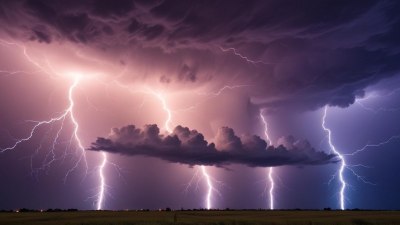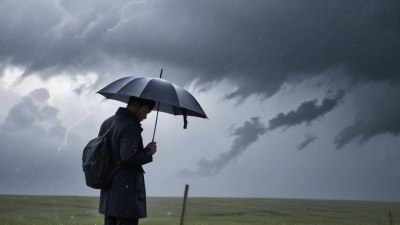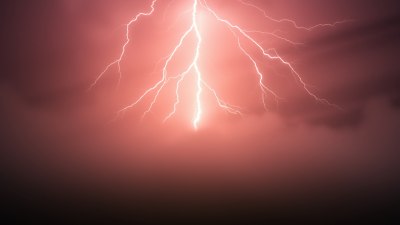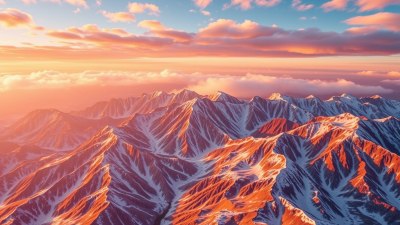How Mountains Block or Boost Local Rainfall
Explore how mountains impact local rainfall by blocking or boosting precipitation through orographic effects and weather patterns.
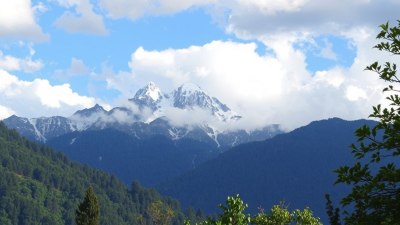
Image created with Flux Schnell
Mountains play a crucial role in shaping local climate and weather patterns, particularly influencing precipitation levels. Their presence can either act as a barrier that blocks rainfall or as a catalyst that boosts it. Understanding the mechanisms by which mountains affect rainfall helps explain why some regions experience lush greenery while others remain dry and arid. This article delves into the atmospheric processes behind these phenomena and the impact mountains have on local and regional rainfall.
Orographic Lift: The Basics of Mountain-Induced Rainfall
One of the key factors in how mountains influence precipitation is orographic lift. As moist air approaches a mountain range, it is forced to ascend the mountain slopes. When air rises, it cools due to expansion in lower pressure at higher altitudes. Cooler air holds less moisture than warmer air, so the moisture condenses into clouds and eventually precipitates as rain or snow on the windward side of mountains. This process explains why the windward slopes of mountainous regions often have higher rainfall and more vibrant vegetation.
For example, the western slopes of the Sierra Nevada mountain range in California receive significant precipitation due to prevailing westerly winds from the Pacific Ocean carrying moisture inland. When these moist air masses hit the mountains, orographic lift causes heavy rainfall, contributing to the dense forests and sizeable snowpack in these areas.
Rain Shadows: Mountains Blocking Moisture
While the windward side of mountains often benefits from increased rainfall, the opposite side – known as the leeward side – frequently experiences a drier climate. This effect is called the rain shadow. When air descends along the leeward slope, it warms and dries, losing its cloud-forming moisture and resulting in significantly reduced precipitation. The rain shadow effect can create deserts or semi-arid areas adjacent to wet mountainous regions.
A prominent example is the Great Basin Desert east of the Sierra Nevada range, which remains dry due to the rain shadow created by these mountains. Similarly, the Atacama Desert in South America lies in the rain shadow of the Andes, making it one of the driest places on Earth despite proximity to the Pacific Ocean.
Factors Affecting Orographic Rainfall Intensity
Several factors influence the amount and distribution of rainfall caused by mountain ranges. These include:
- Orientation relative to prevailing winds: Mountains perpendicular to moist wind flow tend to produce more orographic rainfall.
- Height of Mountain Range: Taller mountains force air to rise higher, leading to more cooling and increased precipitation.
- Moisture Availability: The quantity of moisture in the incoming air mass determines how much precipitation will form upon ascent.
- Air Temperature and Stability: Atmospheric stability affects the ability of air to rise and form clouds.
The combination of these elements dictates whether a mountain range will substantially boost rainfall or simply be a minor influence on local weather.
Microclimates Created by Mountain Rainfall Patterns
The disparities in precipitation between windward and leeward mountain slopes create distinct microclimates. On the windward side, where moisture is abundant, ecosystems tend to be lush and support diverse flora and fauna. In contrast, the drier leeward side may have desert-like conditions with sparse vegetation, demonstrating how mountains sculpt local environmental zones.
An example can be observed in the Hawaiian Islands, where the windward sides of mountains receive heavy rainfall leading to tropical rainforests, while the leeward sides remain relatively dry, supporting shrubland and dry forests.
Mountains and Storm Systems
Beyond steady orographic rainfall, mountains also influence the development and trajectory of larger storm systems. Their presence can divert atmospheric circulation and even intensify precipitation. Mountains can act as focal points where storms stall, leading to prolonged rain events in some regions, or as barriers that steer storms away.
In the Rocky Mountains, for instance, winter storms often drop significant snowfall due to the uplift of moist air, critical for regional water supplies. Similarly, the Himalayas affect monsoon patterns, concentrating rains on specific slopes, which has profound implications for agriculture and water resources in South Asia.
Human Impacts and Mountain Rainfall
The relationship between mountains and rainfall also has implications for human activity. Regions with increased orographic precipitation support agriculture, hydropower, and biodiversity. Conversely, rain shadows create arid environments that challenge settlement and farming.
Water resource management often relies on understanding mountain rainfall patterns to plan reservoirs and irrigation. Moreover, climate change may alter precipitation regimes, impacting how mountains contribute to local water supplies. Changes in temperature and moisture transport could shift the balance of rainfall, potentially modifying the intensity of rain shadows or orographic precipitation.
Mountain Ranges Influencing Regional Climates
Mountain ranges are integral components of larger climatic systems. By affecting where moisture falls, they influence vegetation distribution, soil moisture, and even atmospheric circulation patterns. The Alps, Andes, Rockies, and Himalayas all demonstrate how mountain-driven precipitation shapes regional environments and life.
The Alps divide temperate Europe, contributing to wetter climates in some valleys and drier conditions in others. The Andes similarly create distinct climate zones along the South American west coast, affecting ecosystems from tropical rainforests to deserts.
Technological Advances in Studying Mountain Rainfall
Advances in weather monitoring and simulation technologies allow scientists to study mountain rainfall with increasing precision. Remote sensing satellites provide data on cloud formation and precipitation patterns, while computer models simulate airflow over complex terrain to predict how mountains modify rainfall.
This information improves weather forecasts and water management strategies, helping communities adapt to changes and utilize mountain water resources efficiently.
In summary, mountains dramatically influence local rainfall through physical barriers and orographic uplift. Their effects include enhanced precipitation on windward slopes, dry rain shadow zones on leeward sides, creation of distinct microclimates, and alteration of regional weather patterns. Understanding these processes is critical for ecosystem conservation, urban planning, and adapting to climate change in mountainous and surrounding regions.

